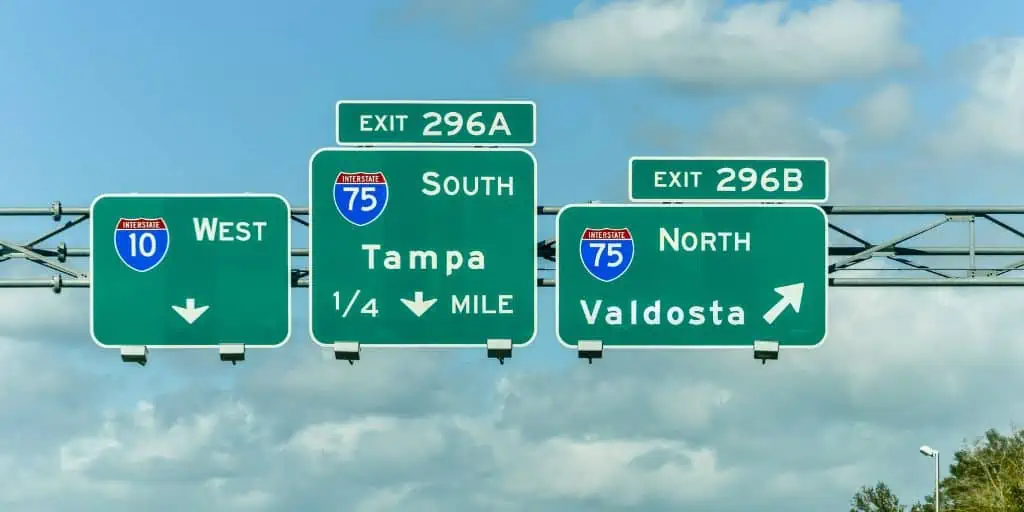What Is Opportunity Cost?
REtipster does not provide tax, investment, or financial advice. Always seek the help of a licensed financial professional before taking action.
Shortcuts
- Opportunity cost is the cost of an investment choice one gives up by choosing another option.
- Opportunity cost is critical in decision-making, especially for investors and those interested in personal finance.
- The opportunity cost formula is simple: subtract the chosen option’s value from the forgone option’s value; a negative result means the investor has made the correct decision.
- Beyond money spent and sunk costs, many factors come into play when calculating opportunity cost, especially unconventional aspects like time spent, future cash outflows, and related investment decisions that cannot usually be reduced to any exact measure.
Why Does Opportunity Cost Matter?
Opportunity cost matters because it helps investors make the best choice from several options.

What’s your exit strategy?
In a perfect world, an investor can choose any and all available options and earn income from them. However, the concept of scarcity typically allows only a limited number of options. When one investment is made, that sometimes shuts the door to other opportunities.
Knowing opportunity cost enables an investor to identify the best course of action from a pool of options. Not only does opportunity cost analysis help an investor to avoid making the wrong decision, but it also highlights the best and ideal option of where to invest excess capital[1].
In other words, opportunity cost is the cost of what was given up to choose one option[2].
When it comes to real estate, this means looking at the potential return of a given property. It involves comparing direct costs, future value, and how much one can make from a real estate investment compared to others[3].
When looking at the potential outcomes of real estate investments, investors often consider the following[4]:
- The purpose of the property and how it fits into the investor’s portfolio.
- How the property is likely to perform in the long run.
- What will happen if the property underperforms?
- What is the projected cash flow of the real estate investment?
- What will happen if you sell the property or lease vacant space?
In addition, opportunity cost is a fundamental concept in personal finance, such as illustrating the compounding effects of saving and investing money over time[5].
How to Calculate Opportunity Cost
By learning how to calculate opportunity costs, investors see the value of their choices. It starts with knowing the expected returns of each investment option. You can use a real estate calculator to estimate the return on investment[6].
Many investors use a simple formula to get the opportunity cost. It involves subtracting the return on investment of the option chosen from the returns of the option not chosen[7].
In formula form, it looks like this:
Opportunity Cost = most profitable investment – alternate investment
For example, an investor is choosing between investing in a rental property with an expected return of 15% and investing in Airbnb with an expected return of 10%. In this example, the most profitable option is the rental property.
Opportunity Cost = 15% – 10%
If the investor chooses to invest in an Airbnb, the opportunity cost of this decision is 5% ROI. This means they are giving up on the extra 5% ROI from the rental property.
Interpreting the opportunity cost this way is simple: if the opportunity cost is positive, the investor will regret the decision; if it is negative, they have made the correct choice.
Note that this is a highly simplified example since other factors may also come into play when someone tries to determine opportunity cost. These factors include supply and demand, time, location, market, reach, and risks, among others. Checking other components of an investment deal beyond mere returns will guide investors in deciding where to put their money to work[8].
Types of Opportunity Cost
Generally, there are two types of opportunity costs. Accounting for both is crucial to make the best decision in a resource-constrained environment.
Explicit Opportunity Cost
The explicit opportunity cost is the cost that can be seen and is obvious from choosing one option over another.
Explicit cost is the amount spent on goods and services needed to move forward with an investment option. It includes tangible expenses and costs made as a direct payment in cash. In real estate, examples include rent, utilities, and spending money to improve a rental property[9].
Implicit Opportunity Cost
Implicit costs are indirect costs that do not involve monetary payments. These are the benefits that an investor could have gained had they made a different choice, such as time, peace of mind, market dominance, or other intangibles.
For example, Chris buys property to use as a vacation home for his family during the holidays. In this example, the implicit cost is giving up the potential income he could have earned if he had rented out the property[10].
Examples of Real Estate Opportunity Cost
Here are some examples of opportunity cost in action in the field of real estate.
Investing in Real Estate
As with any investment, real estate has its pros, cons, and risks. It can be difficult to decide whether to go ahead and invest in property or keep the money. Not doing anything with one’s money, however, can also mean losing opportunities to earn income from a property.
For example, Steve chooses to keep $100k in a savings account instead of investing in real estate. The opportunity cost is the rental income that Steve could have gained if they had used the money to invest in real estate instead.
Investors often encounter the problem of choosing whether to invest in real estate or stocks. On the one hand, there’s the sunk cost of real estate–money lost to fees and closing costs. Conversely, the potential gain of an appreciating property can outweigh the gains to be made in the stock market. Determining the opportunity cost for each option will guide the investor in choosing which investment suits their portfolio.
Choosing a Market
Location factors heavily into the opportunity costs of buying real estate. This is because the location of a rental property affects how it will perform in the long run. When choosing one market over another, people consider different factors like rental rate, rental demand, appreciation rate, and job growth[11].
For example, Nate lives in Sacramento, California, and chooses to buy a rental property there. The opportunity cost is what Nate could have earned by investing in another area with fewer people but less competition.
Picking a Niche or Property Type
Real estate offers several niches, such as rentals, REITs, land investing, and more. Each has its advantages and disadvantages, so an investor must weigh the potential benefits against the odds of losing money before making a financial decision.
This is further complicated because real estate investors can choose from several property types, from single-family residential properties to multi-unit commercial properties and industrial buildings.
Sources
- Fernando, J. (2021.) Opportunity Cost. Investopedia. Retrieved from https://www.investopedia.com/terms/o/opportunitycost.asp
- Fagan, D. (2020, January 29.) Real-Life Examples of Opportunity Cost. Federal Reserve Bank of St. Louis. Retrieved from https://www.stlouisfed.org/open-vault/2020/january/real-life-examples-opportunity-cost
- Esajian, J. (n.d.) How To Calculate Opportunity Cost. Fortune Builders. Retrieved from https://www.fortunebuilders.com/how-to-calculate-opportunity-cost/
- Crowe, T. (2019.) How to Invest in Real Estate: 10 Ways to Build Wealth. Millionacres. Retrieved from https://www.millionacres.com/real-estate-investing/real-estate-investing-guide/
- Milnes, D. (2023, February 7.) Opportunity Cost. MoneyGeek. Retrieved from https://www.moneygeek.com/financial-planning/resources/what-is-opportunity-cost/
- Everestate. (n.d.) Real Estate Investment Calculator. Retrieved from https://www.everestate.com/return-calculator-how-to
- Carlson, R. (2020.) What Is Opportunity Cost? The Balance Small Business. Retrieved from https://www.thebalancesmb.com/opportunity-cost-definition-393313
- O’Connell, B. (2021.) The True Cost Of Investing: Opportunity Cost. Forbes Advisor. Retrieved from https://www.forbes.com/advisor/investing/opportunity-cost/
- Corporate Finance Institute. (n.d.) Explicit Costs. Retrieved from https://corporatefinanceinstitute.com/resources/knowledge/accounting/explicit-costs/
- Geier, B. (2019.) Opportunity Cost: Definition and Examples. Yahoo! Finance. Retrieved from https://finance.yahoo.com/news/opportunity-cost-definition-examples-195742141.html
- Richardson, S. (2022.) Types Of Real Estate Investments: Everything You Need To Know. Rocket Mortgage. Retrieved from https://www.rocketmortgage.com/learn/types-of-real-estate-investment









